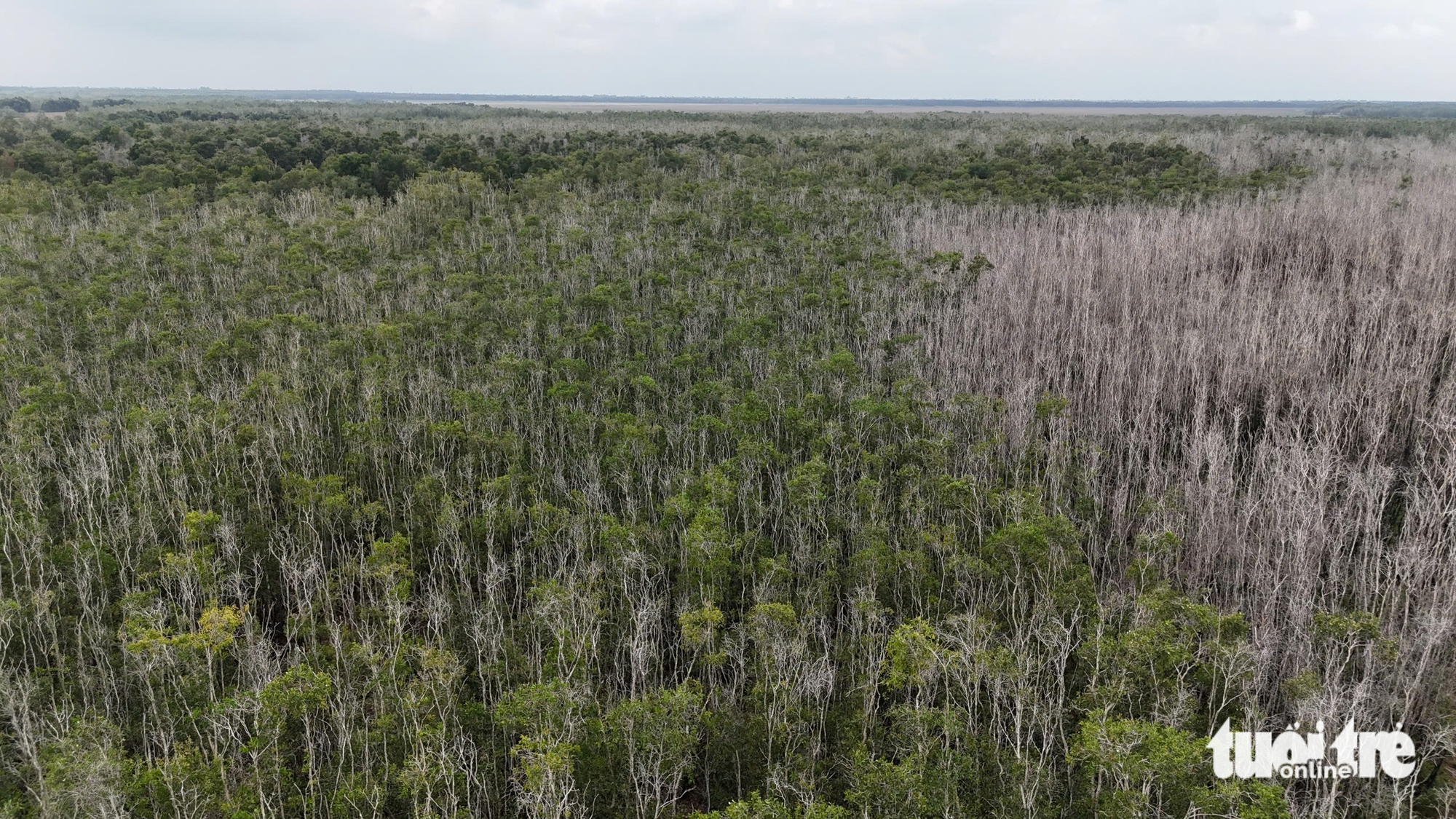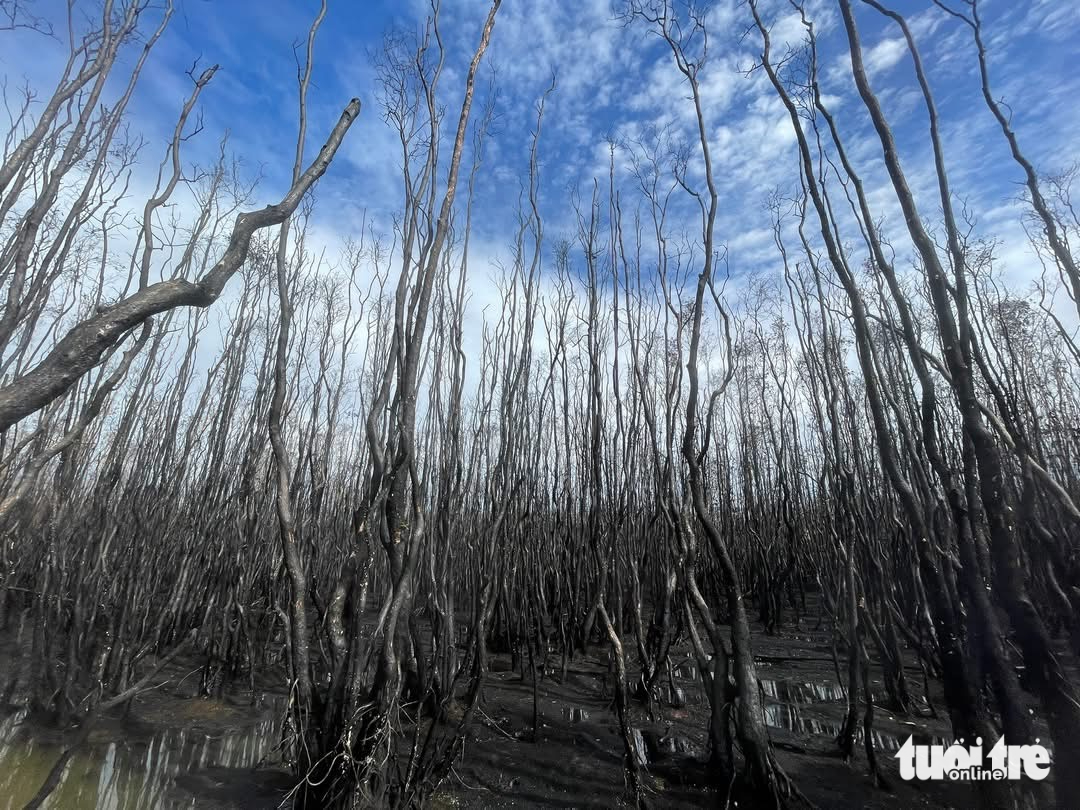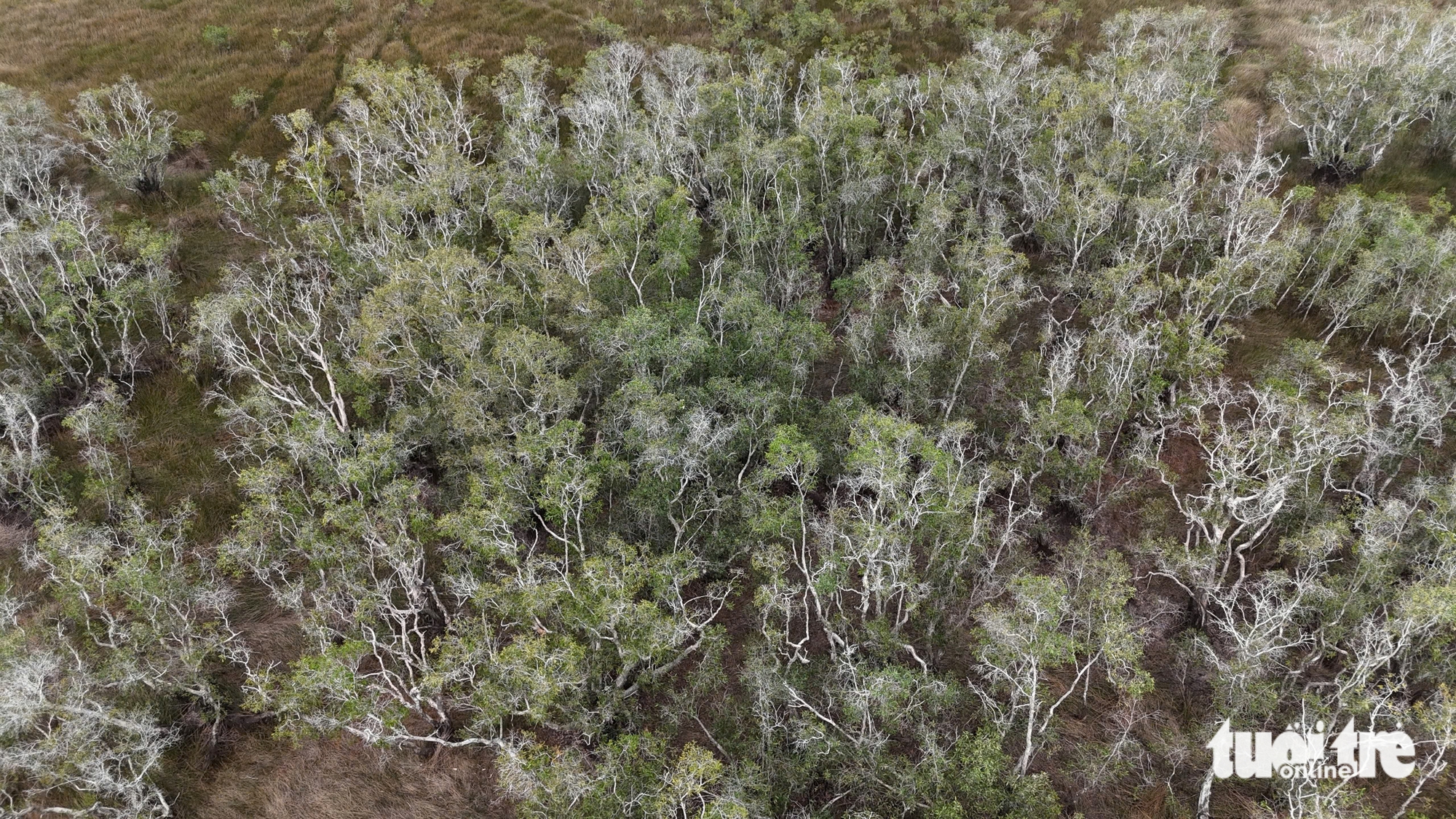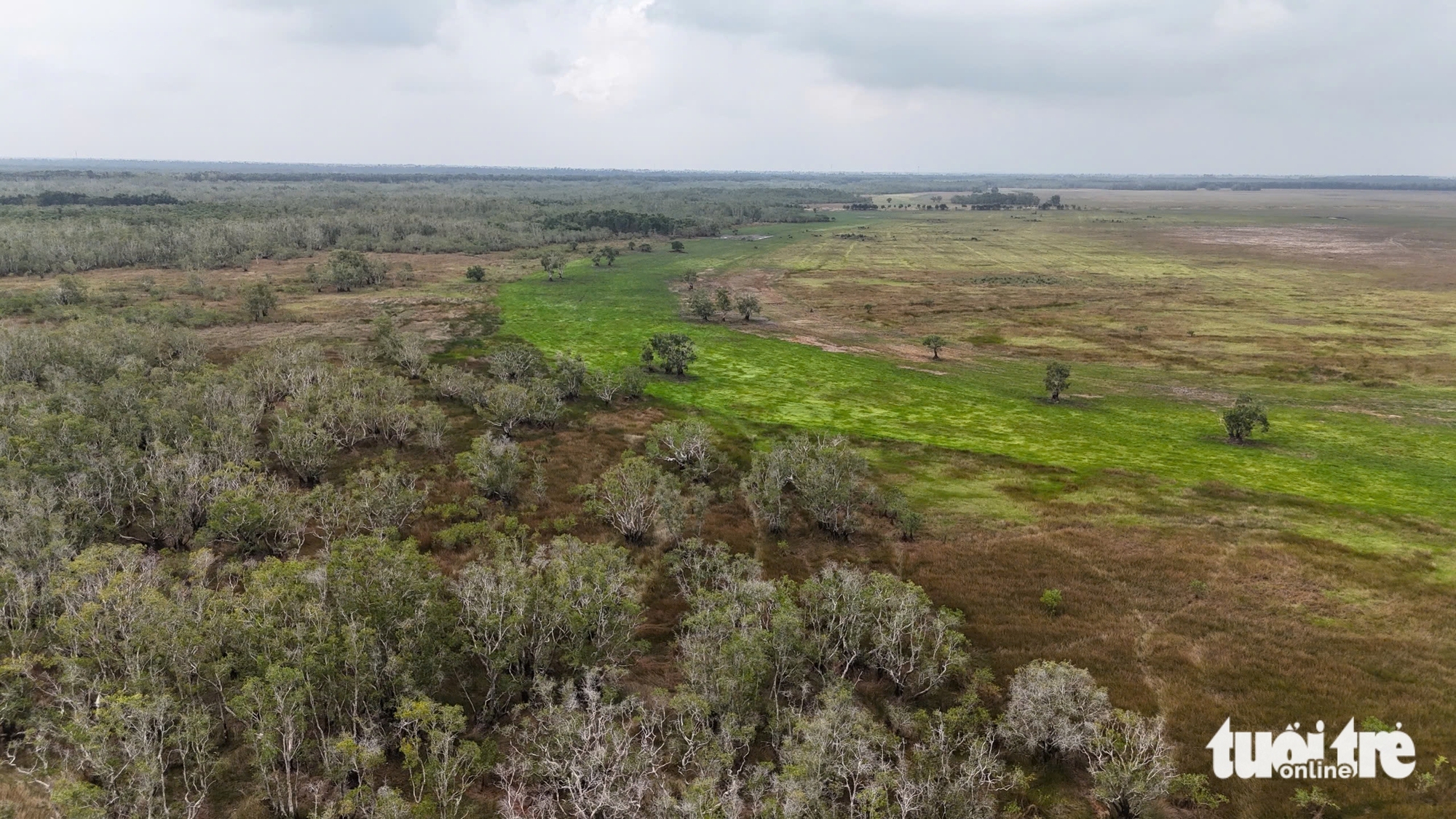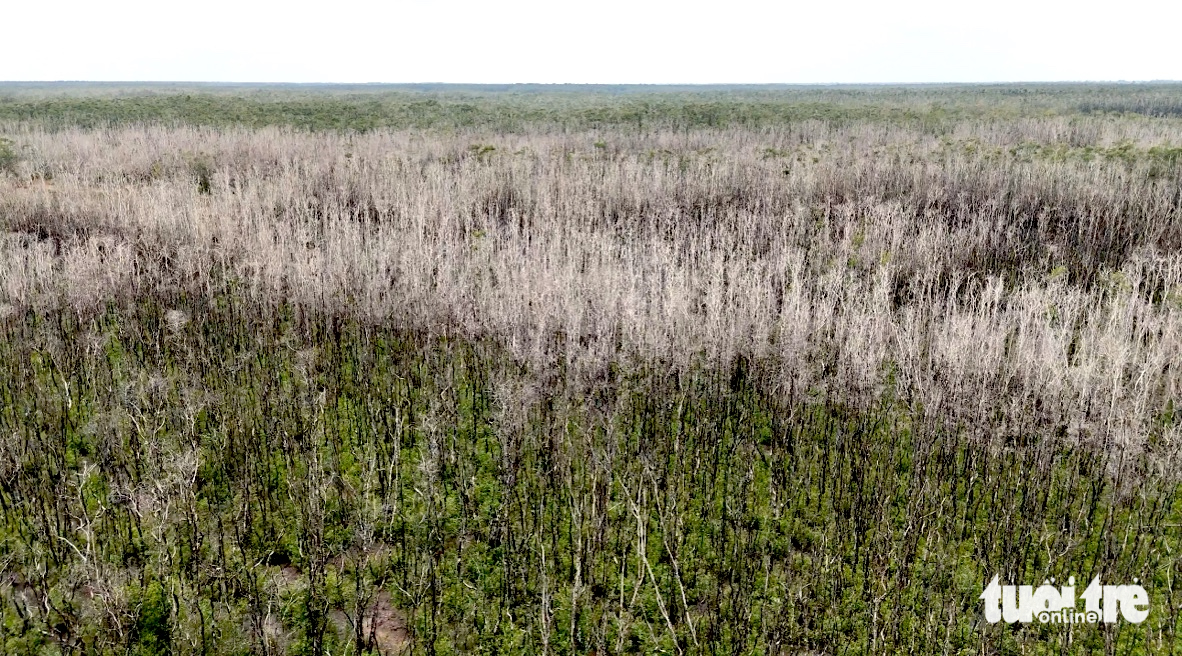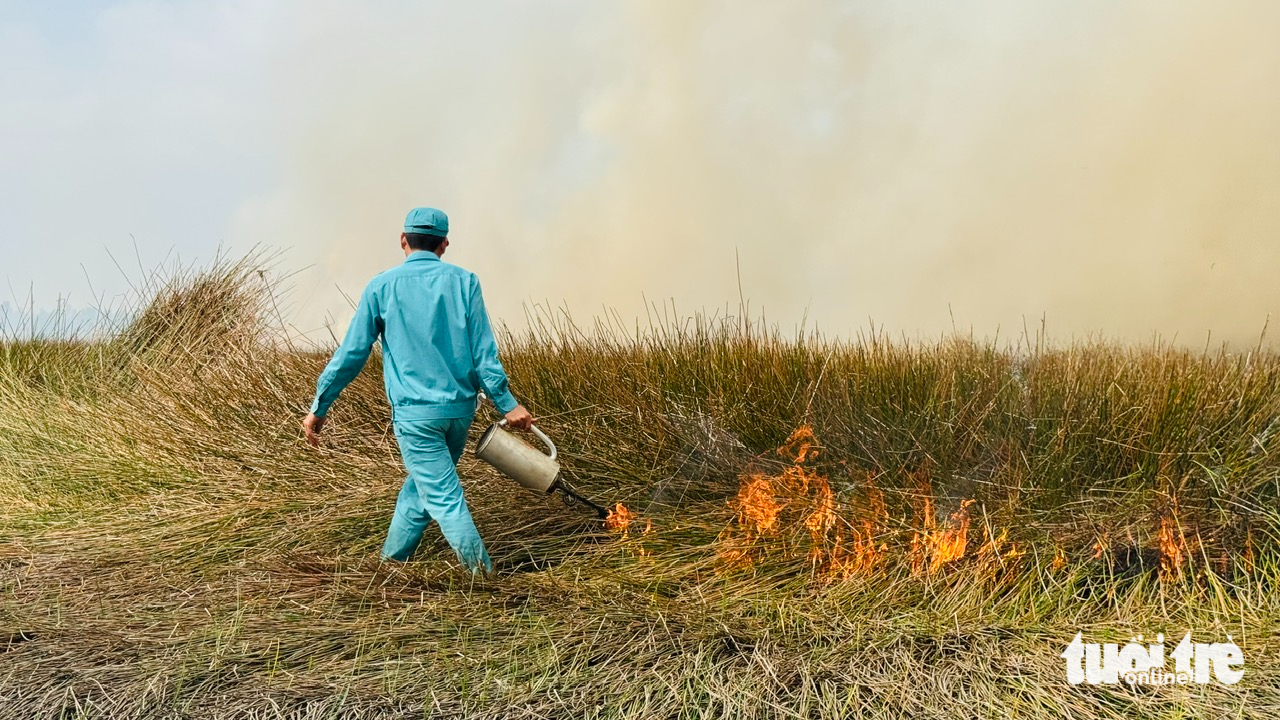The Melaleuca forest in Zone A1 of Tram Chim National Park in Dong Thap Province, southern Vietnam has recovered well nearly a year after a forest fire, with many Melaleuca trees regrowing new branches.
This recovery was observed during a field survey conducted on Monday.
In areas where the fire was most severe, young Melaleuca trees have now covered the forest floor, forming a thick carpet.
The fire occurred on June 11, 2024, in Zone A1 of Tram Chim National Park, destroying approximately 20 hectares of Melaleuca forest.
|
|
| Melaleuca forest in Zone A1 of Tram Chim National Park in Dong Thap Province, southern Vietnam after the June 2024 fire. File photo: Tram Chim National Park |
Authorities mobilized around 247 people to combat the fire, which was brought under control by 4:00 pm that same day.
The fire was caused by illegal forest intrusion and careless use of fire.
The significant recovery of the Melaleuca forest nearly a year after the fire is seen as evidence that the Melaleuca ecosystem is adapted to fire.
|
|
| Green leaves regrow on Melaleuca trees as of March 31, 2025, nearly one year after a large forest fire in Zone A1 of Tram Chim National Park in Dong Thap Province, southern Vietnam. Photo: Tran Triet |
Melaleuca trees are moderately fire-resistant, and fire even helps stimulate seed regeneration.
Dr. Tran Triet, director of the Southeast Asian Crane Conservation Program at the International Crane Foundation, noted that the fire, with its intensity, also helped reduce the buildup of combustible materials on the forest floor, preventing larger, more destructive fires.
“Fire can be used as a tool and method for ecosystem management and restoration,” Dr. Triet explained.
“For example, in January and March this year, Tram Chim National Park worked with local forestry and fire prevention forces to carry out controlled burns on nearly 100 hectares of grassland in Zone A1.”
|
|
| Green leaves regrow on Melaleuca trees as of March 31, 2025, nearly one year after a large forest fire in Zone A1 of Tram Chim National Park in Dong Thap Province, southern Vietnam. Photo: Tran Triet |
According to Dr. Triet, burning accumulated plant debris from years past helps regenerate new vegetation, providing more food for animals and making the soil more accessible.
It also removes residual debris, reducing the risk of future fires.
|
|
| Young Melaleuca trees cover the forest floor as of March 31, 2025, nearly one year after a large forest fire in Zone A1 of Tram Chim National Park in Dong Thap Province, southern Vietnam. Photo: Tran Triet |
Tram Chim National Park has continued to coordinate controlled burning efforts in other areas of Zone A1 as part of a broader program to restore the sarus crane population.
According to scientists, the crane conservation program not only focuses on breeding and releasing sarus cranes but also on restoring the wetland ecosystem of Tram Chim, a valuable remnant of the former Dong Thap Muoi region.
|
|
| Controlled burning at Tram Chim National Park in Dong Thap Province, southern Vietnam, March 2025. Photo: Tran Triet |
Like us on Facebook or follow us on X to get the latest news about Vietnam!



